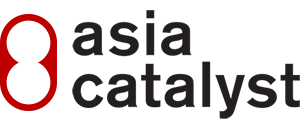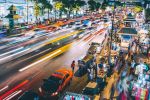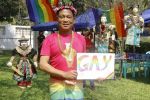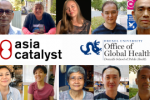 Asia Catalyst Capacity Building and Community Initiatives Director, Gisa Dang, was in Myanmar to mark the launch of Asia Catalyst’s curriculum, Change It, into the Burmese language. Here she reflects on her experiences in the country, and the occasion of the International Day Against Homophobia and Transphobia, which took place on May 17. _____________________________________________________________________
Asia Catalyst Capacity Building and Community Initiatives Director, Gisa Dang, was in Myanmar to mark the launch of Asia Catalyst’s curriculum, Change It, into the Burmese language. Here she reflects on her experiences in the country, and the occasion of the International Day Against Homophobia and Transphobia, which took place on May 17. _____________________________________________________________________
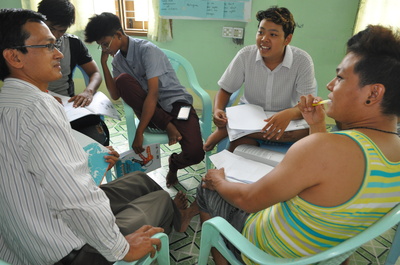 In Myanmar (Burma) community based organizations (CBOs) have begun to shine light on discrimination and sanctions against marginalized communities in the country. I made my first trip to Yangon in November 2013 as part of Asia Catalyst’s assessment of what Burmese CBOs were asking for in terms of capacity, support and expertise. Our focus was on the lesbian, gay, bisexual and transgender (LGBT) community, although discrimination is by no means limited to that group.
In Myanmar (Burma) community based organizations (CBOs) have begun to shine light on discrimination and sanctions against marginalized communities in the country. I made my first trip to Yangon in November 2013 as part of Asia Catalyst’s assessment of what Burmese CBOs were asking for in terms of capacity, support and expertise. Our focus was on the lesbian, gay, bisexual and transgender (LGBT) community, although discrimination is by no means limited to that group.
On my second trip last week, I met many of these individuals and organizations again, and increased exchanges with the LGBT community through our colleagues at human rights organization Equality Myanmar Yangon and Mandalay, and LGBT organizations Colors Rainbow, and the LGBT Rights Network (Network). I also witnessed the launch of International Day Against Homophobia and Transphobia (IDAHOT) week in Yangon at the first LGBT photo exhibition that the country has seen. The exhibit opened on Sunday May 11.
On my first trip, I could already feel the excitement among organizations and national networks about initiatives to cultivate and engage policy makers and members of parliament on advocacy issues that their communities cared about. On a regional and international level, Equality Myanmar and Colors Rainbow together with the Network have been quite active over the past year, and I could see that their efforts are seeing first results. For example, the September 23, 2013 report of the United Nations Special Rapporteur on the situation of human rights in Myanmar to the UN Human Rights Council, highlighted punitive legislation targeting the LGBT community and a particularly egregious case of abuse against LGBT individuals in Mandalay. 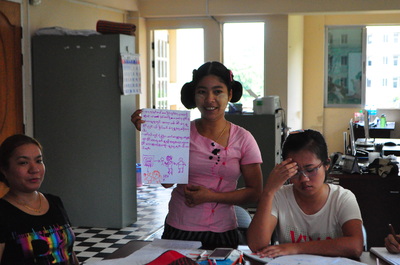
Myanmar is also currently chairing ASEAN and the coalition was able to actively engage in advocacy planning for Myanmar’s first ASEAN summit. Networking at the March 2014 ASEAN Civil Society Conference/ASEAN People’s Forum (ACSC/APF) held in Yangon resulted in LGBT, sexual orientation, and gender identity issues being highlighted throughout the conference’s final statement. Through their strategy of attending a variety of workshops, listening, and connecting their issues, they have been able to make themselves heard.
But how do the issues raised reflect locally? What is it like to be LGBT in Myanmar’s larger cities and what daily realities do LGBT individuals have to face? In Myanmar last week for the launch of the Burmese edition of Asia Catalyst’s advocacy curriculum for community based organizations, Change It, I had the opportunity to conduct a one day workshop with 22 staff and volunteers of LGBT organizations and their allies in Mandalay. A few of the participants are focal points for the LGBT Rights Network and had previously participated in trainings on LGBT rights. But, for most of the participants, it was their first experience discussing advocacy.
However, the priorities were clear for everyone. From the beginning, participants stressed equal marriage as their main goal, followed by the right to employment and establishing legal protection for LGBT rights. In hot and humid workshop conditions, participants described to me and each other their first hand experiences of homophobia and how it was at the root of much of the rights violations against LGBT people in the country. However, beyond the social and cultural environment, discrimination is also still entrenched in law with Section 377 of the Penal Code criminalizing unnatural sexual behavior and still being used against the LGBT community today. Human rights education is also very limited with the general public’s knowledge of LGBT realities understandably lacking.
 Hearing about their challenges, I was struck by the strong representation of transgender persons in the workshop – something very unusual, for example, in China. The trans peoples’ stories of discrimination endured told of culture and tradition; of religious values that, for example, dub LGBT people as violators of women in a previous life. But most of all, the people whom I met struck me as proud. Proud to be who they are and where they were in their lives; with dreams of a meaningful life, a fulfilling profession, marrying, forming families, becoming Ms. Myanmar, and of families accepting of their choices.
Hearing about their challenges, I was struck by the strong representation of transgender persons in the workshop – something very unusual, for example, in China. The trans peoples’ stories of discrimination endured told of culture and tradition; of religious values that, for example, dub LGBT people as violators of women in a previous life. But most of all, the people whom I met struck me as proud. Proud to be who they are and where they were in their lives; with dreams of a meaningful life, a fulfilling profession, marrying, forming families, becoming Ms. Myanmar, and of families accepting of their choices.
The pride of the LGBT Community showed in every picture of the &PROUD exhibition in Yangon. &PROUD is a currently ongoing LGBT photo exhibition at Witness Yangon Art Space based on submissions to a two month photo competition for local LGBT youth. I spoke with many visitors to the exhibition’s opening event who were touched by the images full of life and diversity. The secret stars were the couple whose recent gay wedding was widely publicized in domestic Myanmar print media reports. The originally positive reports generated a lot of hate speech and attacks in the aftermath, but the photos on display at the exhibition depicted the moments of happiness and excitement that everyone should have the right to enjoy, should they so choose.
